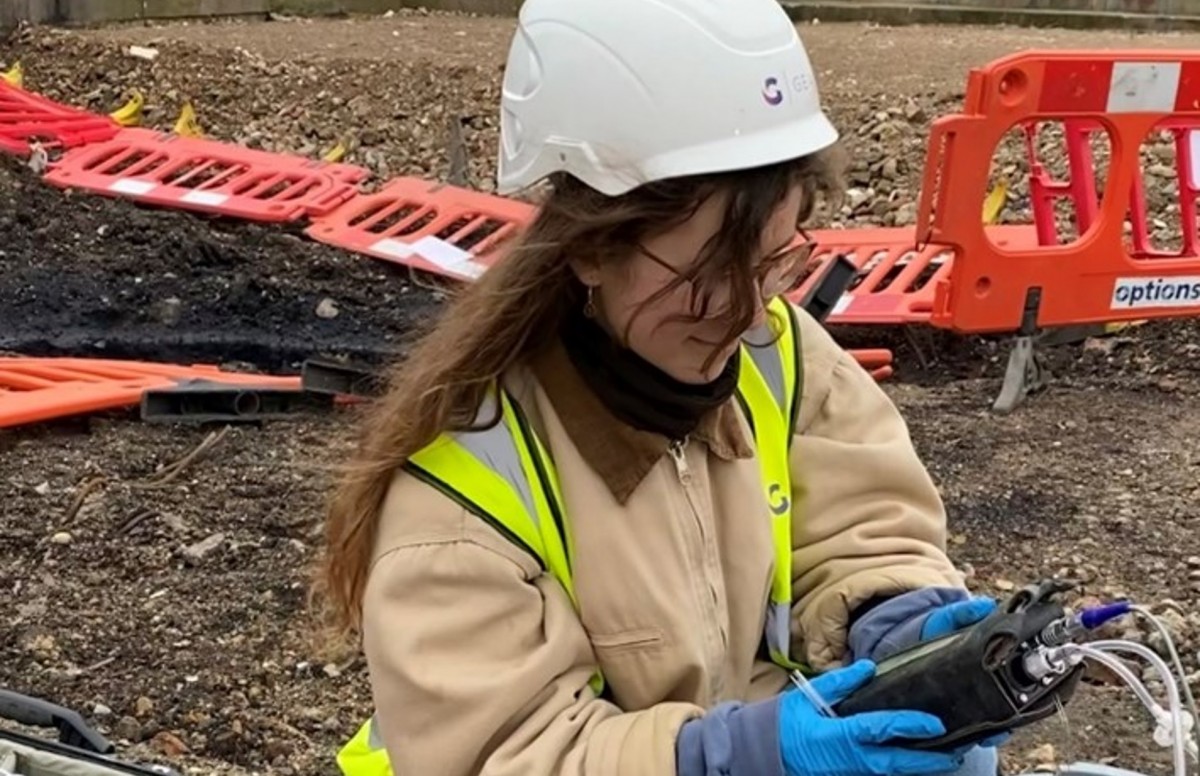All about Geotheta
All about Geotheta
Blog Article
Not known Details About Geotheta
Table of ContentsThe smart Trick of Geotheta That Nobody is Talking AboutTop Guidelines Of GeothetaA Biased View of Geotheta7 Simple Techniques For GeothetaThe Facts About Geotheta Uncovered

They conduct site investigations, gather examples, do laboratory examinations, and examine information to evaluate the viability of the ground for building tasks - Tailings Engineer. Based on their searchings for, geotechnical engineers offer referrals for foundation style, incline security, maintaining structures, and reduction of geotechnical threats. They team up with various other experts, such as engineers, architectural designers, and building and construction teams, to guarantee that geotechnical factors to consider are incorporated into the overall project layout and implementation
By evaluating the habits and buildings of dirt and rock, they can identify potential geotechnical hazards such as landslides, dirt settlement, or slope instability. Their experience aids prevent failings or crashes that might threaten lives and home. Right here are some comprehensive responsibilities and responsibilities of a geotechnical engineer: Website Investigation: Geotechnical engineers conduct website investigations to collect data on subsurface conditions.
They translate the information to understand the residential or commercial properties and habits of the dirt and rock, including their strength, permeability, compaction attributes, and groundwater problems. Geotechnical Evaluation and Layout: Geotechnical designers analyze the data gathered during website examinations to analyze the stability and viability of the website for construction jobs. They carry out geotechnical computations and modeling to assess factors such as birthing capacity, negotiation, incline stability, lateral earth stress, and groundwater flow.
The smart Trick of Geotheta That Nobody is Discussing
Foundation Layout: Geotechnical designers play a critical duty in creating foundations that can securely support the intended structure. They evaluate the dirt conditions and lots demands to figure out the proper foundation type, such as shallow structures (e.g., grounds), deep foundations (e.g (https://gravatar.com/exactlypainterdeb7b76e1a)., stacks), or specialized methods like dirt enhancement. They take into consideration variables such as negotiation restrictions, birthing capability, and soil-structure communication to create optimal structure layouts
They assess construction strategies, monitor website activities, and conduct area evaluations to validate that the design recommendations are followed. If unpredicted geotechnical problems develop, they examine the scenario and offer recommendations for removal or changes to the style. Danger Evaluation and Reduction: Geotechnical engineers assess geotechnical risks and risks linked with the project website, such as landslides, liquefaction, or dirt erosion.

Cooperation and Communication: Geotechnical engineers work very closely with other specialists entailed in a task, such as designers, architectural designers, and building groups. Reliable communication and cooperation are important to incorporate geotechnical considerations right into the general project design and building and construction procedure. Geotechnical engineers supply technical know-how, solution questions, and make sure that geotechnical demands are fulfilled.
The Greatest Guide To Geotheta
Below are some kinds of geotechnical designers: Structure Designer: Foundation designers specialize in designing read more and examining structures for frameworks. They examine the soil problems, tons needs, and site qualities to figure out one of the most ideal foundation kind and design, such as shallow structures, deep foundations, or specialized methods like heap structures.
They evaluate the factors affecting slope security, such as soil homes, groundwater conditions, and incline geometry, and develop methods to avoid slope failures and mitigate dangers. Quake Designer: Quake designers specialize in evaluating and designing frameworks to hold up against seismic pressures. They assess the seismic risk of a website, evaluate dirt liquefaction potential, and establish seismic style criteria to make certain the security and durability of structures during quakes.
They do area testing, gather samples, and evaluate the accumulated information to define the dirt homes, geologic developments, and groundwater conditions at a site. Geotechnical Instrumentation Designer: Geotechnical instrumentation designers concentrate on monitoring and gauging the actions of dirt, rock, and frameworks. They set up and preserve instrumentation systems that keep track of variables such as dirt negotiation, groundwater levels, incline motions, and architectural displacements to assess performance and provide very early warnings of prospective issues.
The Ultimate Guide To Geotheta
They conduct examinations such as triaxial tests, loan consolidation examinations, straight shear examinations, and leaks in the structure tests to gather data for geotechnical analysis and design. Geosynthetics Engineer: Geosynthetics designers focus on the style and application of geosynthetic products, such as geotextiles, geogrids, and geomembranes. They use these materials to enhance soil stability, enhance inclines, provide drainage remedies, and control erosion.
They have a tendency to be investigatory individuals, which indicates they're intellectual, introspective, and inquisitive. They are curious, methodical, sensible, logical, and sensible. Some of them are likewise social, suggesting they're kind, generous, cooperative, patient, caring, practical, empathetic, skillful, and pleasant - Consulting Engineer.
In the office environment, geotechnical designers use specialized software devices to carry out estimations, develop layouts, and examine data. They prepare records, testimonial job specs, connect with clients and group participants, and coordinate project tasks. The workplace setup provides a favorable environment for research, analysis, and cooperation with various other experts associated with the task.
Geotheta Can Be Fun For Anyone
They frequently check out task sites to perform website examinations, examine geotechnical conditions, and gather data for evaluation. These visits entail taking a trip to different areas, in some cases in remote or challenging surfaces. Geotechnical designers may execute dirt tasting, conduct examinations, and display building and construction activities to ensure that the geotechnical aspects of the job are being executed properly.
Geotechnical engineers additionally work in specialized geotechnical laboratories. Geotechnical laboratory engineers function extensively in these environments, dealing with screening equipment, operating tools, and tape-recording information.
Report this page